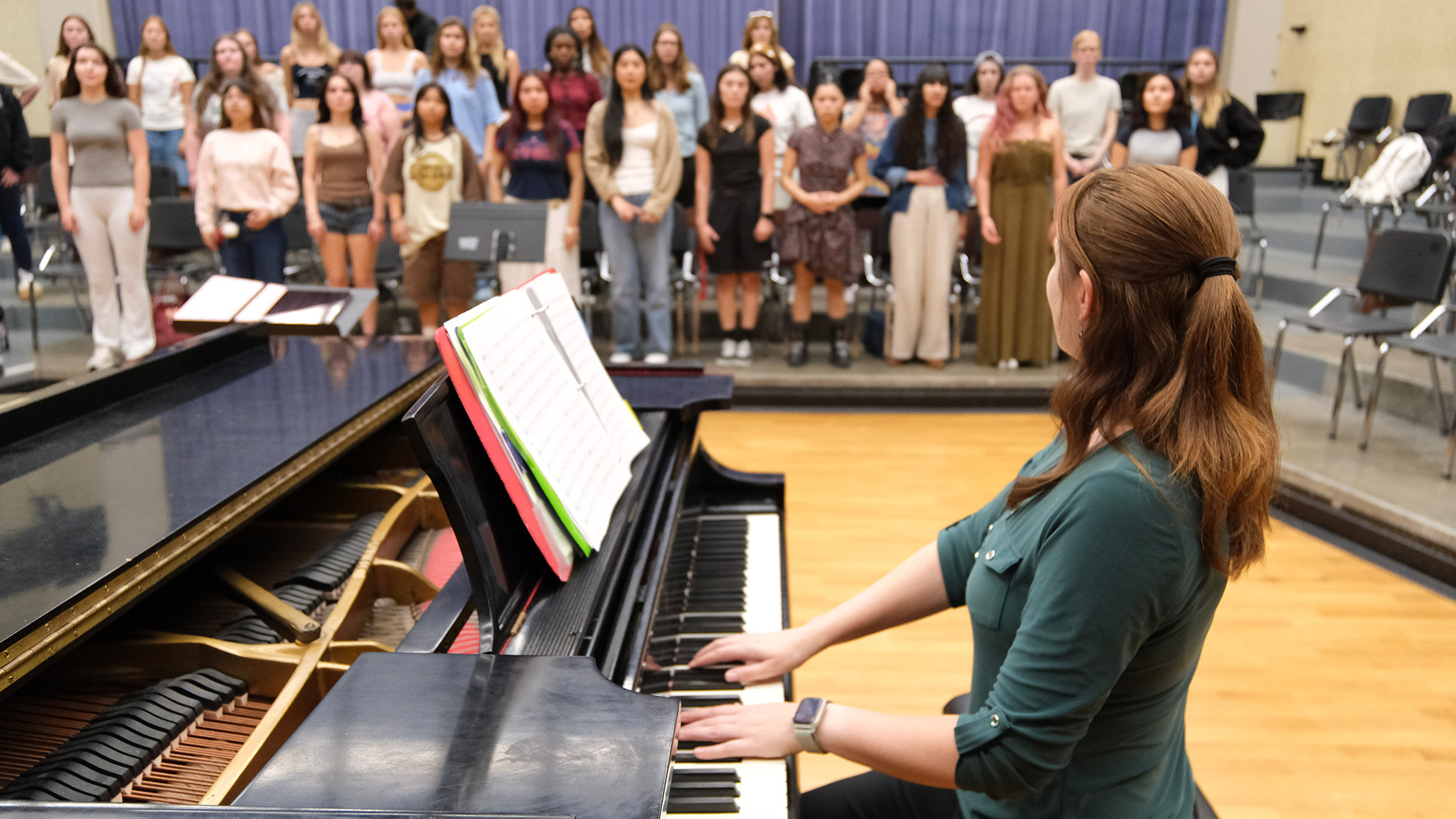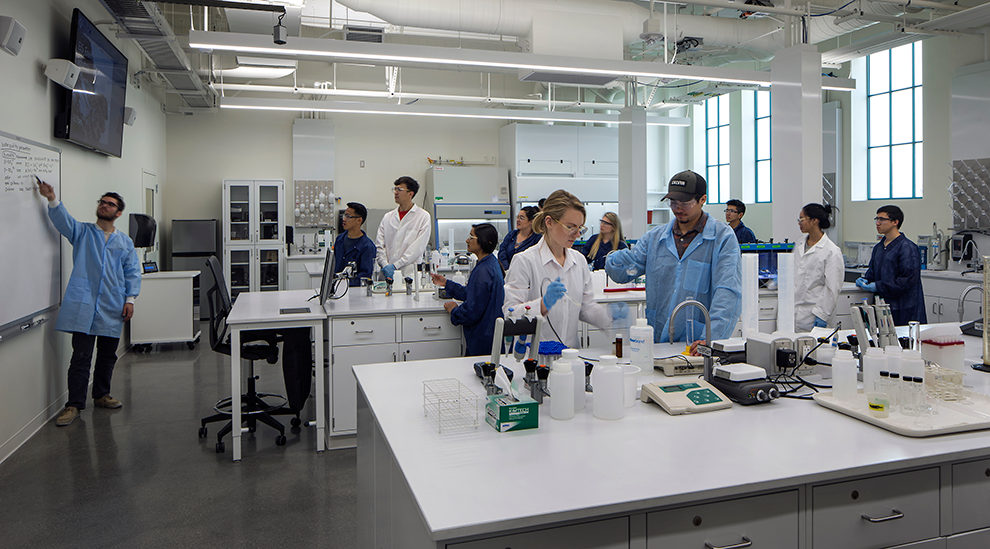SDSU's Center for Intercultural Relations: 20 Years and Counting
The CIR remains relevant by changing with the university

San Diego State University’s oldest community center continues to respond to societal changes and embraces its future.
The Center for Intercultural Relations (CIR) celebrated a major milestone — its 20th anniversary — Nov. 28 at the Lee & Frank Goldberg Courtyard. Born from student activism in the early 2000s and shepherded by then-Vice President for Student Affairs James Kitchen, the Cross Cultural Center, as it originally was known, answered the call from marginalized and historically underrepresented students who wanted an intersectional space on campus where they could learn about and from each others’ cultures.
The space has evolved over the years as SDSU and its satellite campuses now have 10 community centers — several that started within CIR’s doors — that serve many of the communities once focused in the CIR. But the center’s importance has not waned, SDSU officials said.
"The Center for Intercultural Relations has been critically important in supporting minoritized students over the past 20 years at San Diego State University,” said Jessica Nare, associate vice president for Community & Belonging in the Division of Student Affairs and Campus Diversity. “CIR has supported cultural student organizations and provided growing space for initiatives that later grew into the Black Resource Center, Latinx Resource Center, Native Resource Center, Women's Resource Center and Pride Center.
“It is hard to fully capture the impact the CIR has had on the growth and development of culturally specific initiatives on campus. In short, it has been a place of germination, development and support for multicultural issues,” Nare said.
Daniela Saldana Gurgol, the center’s director, said the creation of the new centers provided CIR with an opportunity to grow and evolve with the changing times.
“I think for us, it’s been a good challenge,” Saldana Gurgol said. “It’s forced us to ask ourselves what our goals are, how we accomplish them and what we need to make them happen.
“But we are still alive and we’re still here,” she said.
The original Cross Cultural Center was housed in the old student union from 2003 until 2011 when the union was demolished to make way for the Conrad Prebys Aztec Student Union, which opened in 2014. The center was housed in Chapultepec residence hall on the west side of campus during construction and now is located in Suite 250 of the new student union.
The center teemed with activities, such as a lecture series, a cultural competency certificate program and the original Welcome Week receptions for various campus groups, which were attended by hundreds of students. It brought together academia and Student Affairs with the student body and provided exposure for historically underrepresented groups.
“It was the hub,” said Tanis Starck, who served as center director from 2007 to 2016. “The vision was to have a place where underrepresented and marginalized students could come together in a space supported by Associated Students so that the organizations could develop and flourish.
“We were empowering students that felt unseen,” she said.
Saldana Gurgol said the center has a newfound purpose by sifting through data on retention and graduation rates as well as student feedback from various sources and using the information to identify which student populations needed the center’s support while the center also stays true to its intercultural mission.
“As the CIR continues to grow and evolve, it will continue to bring students together to explore cross-cultural topics, support students of color, foster interfaith dialogues and provide welcoming spaces to multiracial and multiethnic students," Nare said.
CIR’s current strategic initiatives focus on supporting men of color (Young Men of Color Alliance), the university’s Southwest Asian and North African (SWANA) communities, the university’s Muslim and Jewish communities, as well as a significant interfaith effort.
The CIR hosts the SWANA Heritage Month during April; the celebration of National Immigrant’s Day in October; several support spaces such as Café for Women of Color and Yalla Let’s Chat; the Multicultural Learning Community and the Young Men of Color Learning Community which are First-Year Experience Programs; Interfaith Programming like community iftar and Shabbat; and several welcome receptions during Welcome Week.
The programming has been a critical part of the SDSU experience for students like Jasmin Zeis-Khalil, an Egyptian American sophomore political science major from Minnesota who works at CIR as a program assistant for Middle Eastern student initiatives.
When she arrived on campus, she said she visited many of the community centers but found a place at the CIR due to its intersectional nature and its emphasis on the Middle Eastern student community.
“I’m incredibly grateful that we have this space because you can’t see our community on a census report, so coming here, it was hard to know if I was going to find people who looked like me or who could relate to me,” Zeis-Khalil said. “It was cool to find a place where there were people like me on campus and had specific events that related to me. It’s really shaped the interests I’ve had as a student.”
Saldana Gurgol said that SDSU’s Division of Student Affairs and Campus Diversity has been pivotal in providing resources and support.
“They supported us bringing in the conversation of religious diversity because there’s not a lot of CSUs that are intentional about doing interfaith work,” Saldana Gurgol said.
Looking ahead, Saldana Gurgol said the center will always be part of campus, even if it revisits its purpose in the future.
“My experience is that there will always be space for a multicultural center. The work of diversity, equity and inclusion is always changing, always morphing. The CIR can change, as can its strategic initiatives, but I think that will always create this opportunity to serve in some capacity.”



